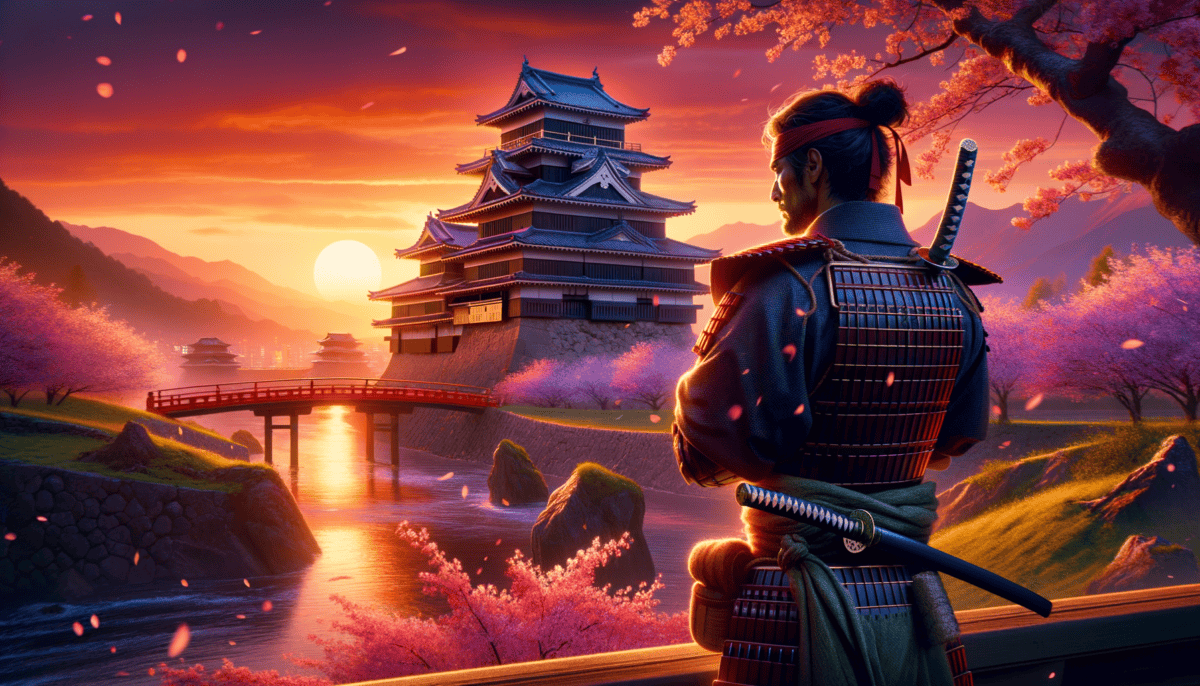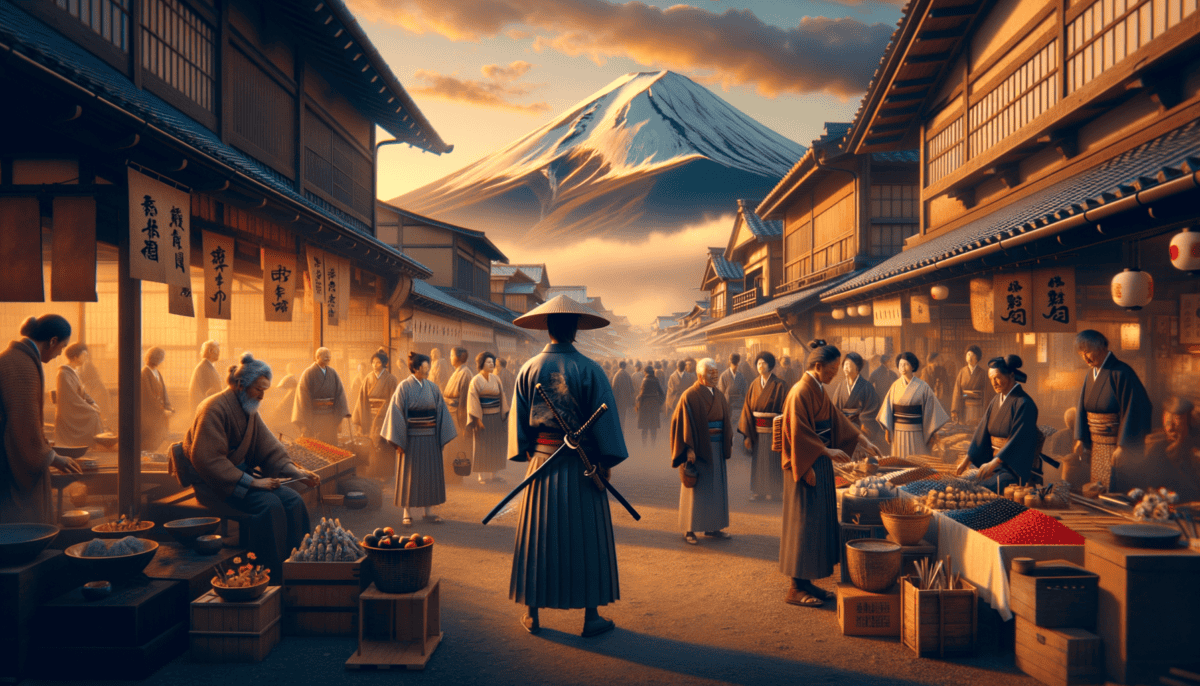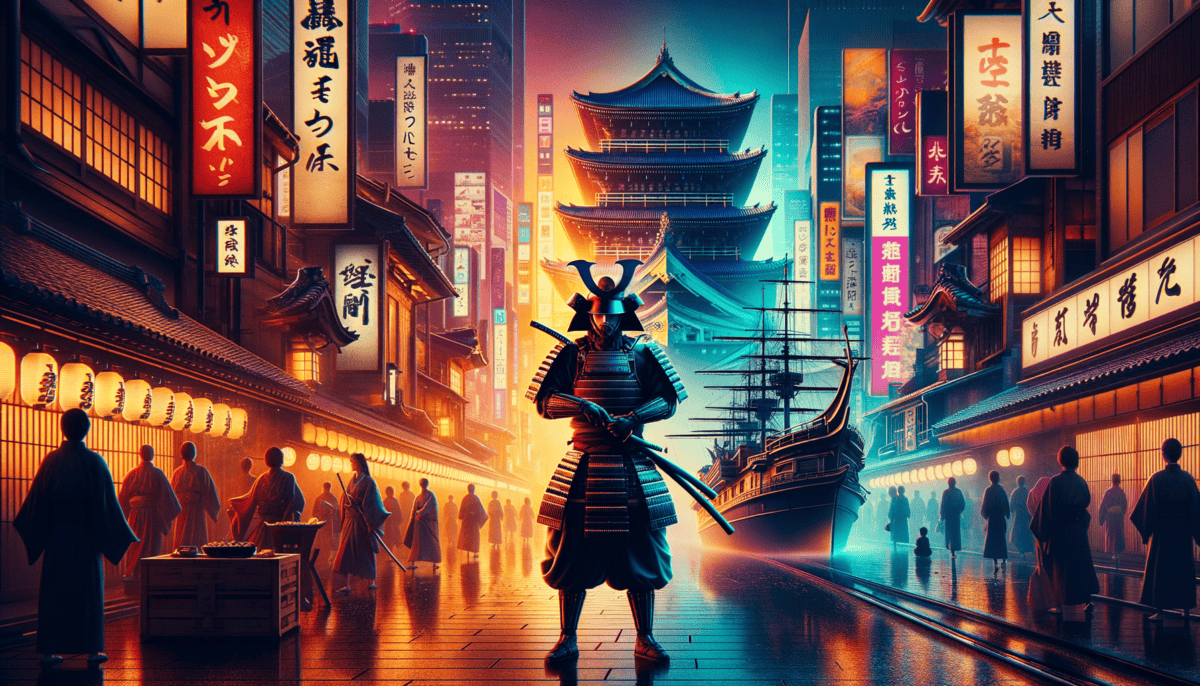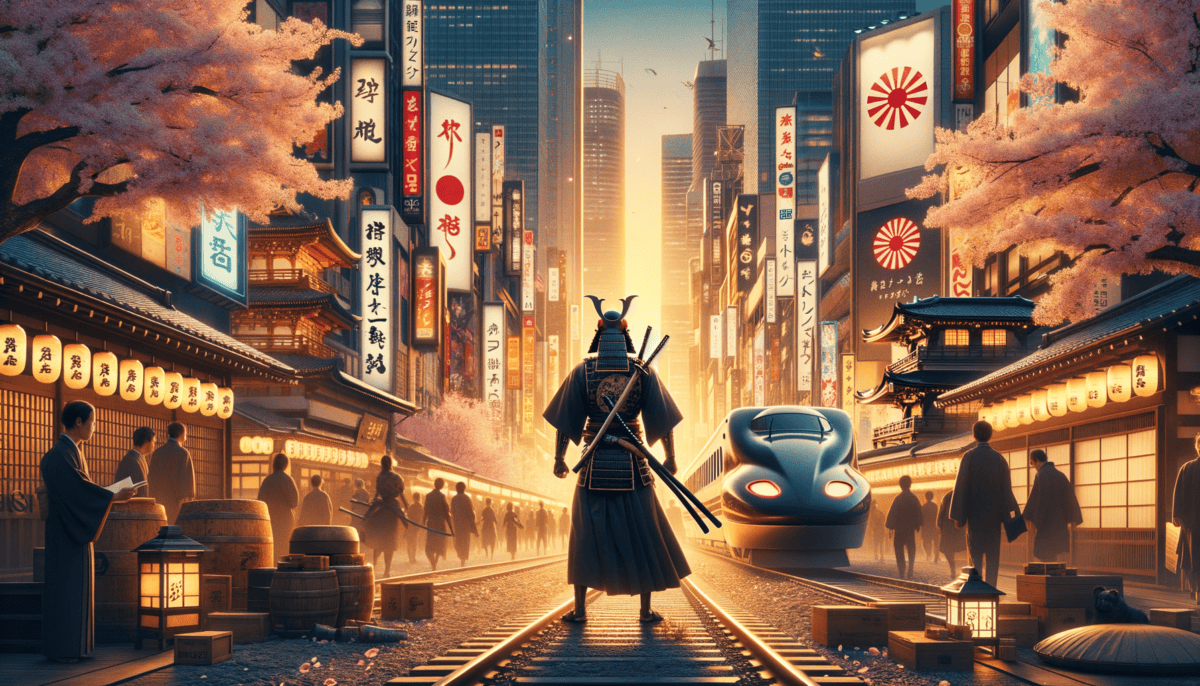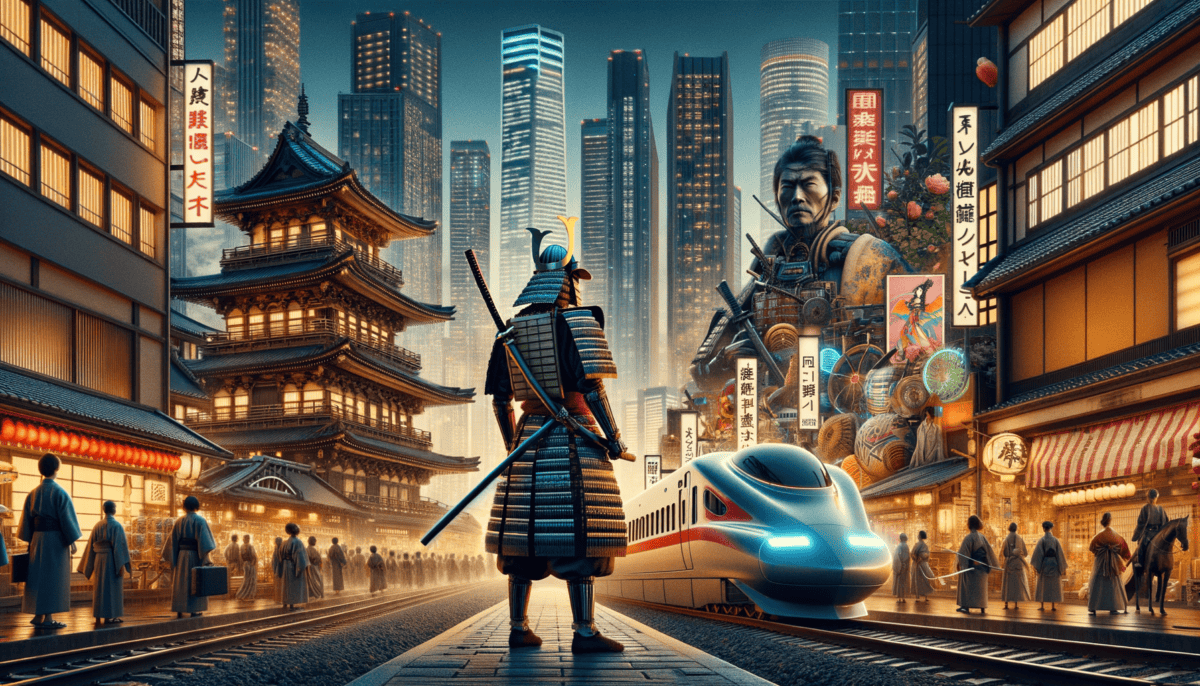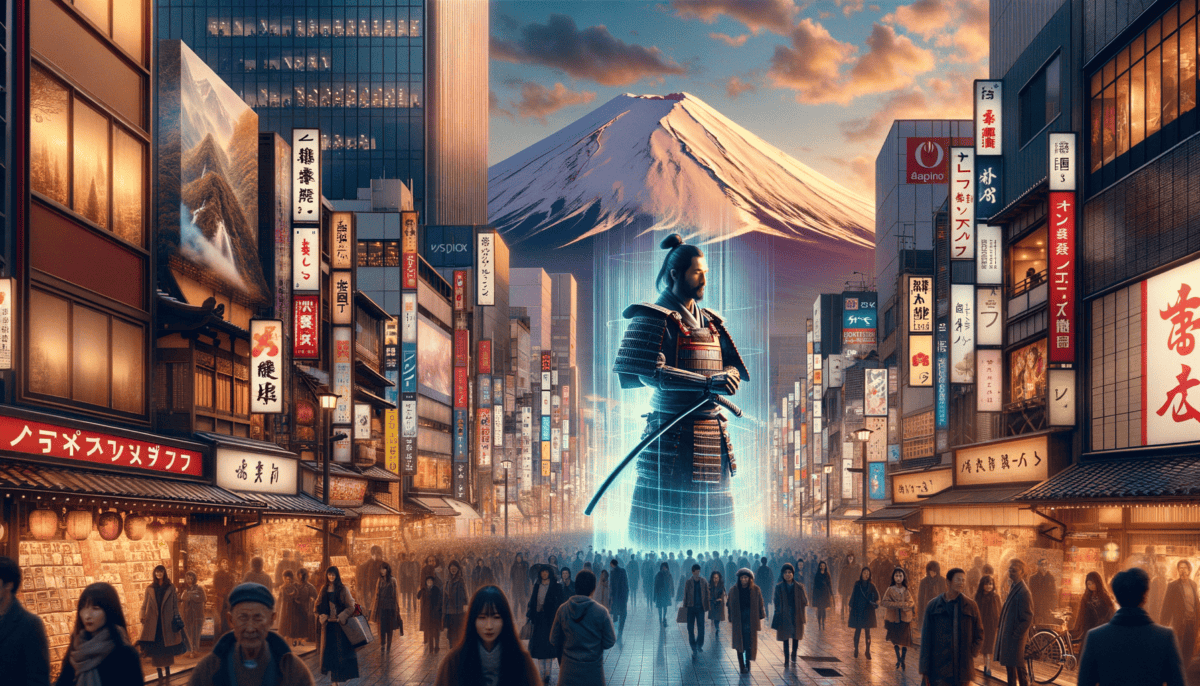Ancient Warriors of Japan
Long ago in Japan, there lived brave warriors called samurai. ️ They were like superheroes of their time! These special fighters lived in big castles and protected their lords with shiny swords and cool armor.
"My sword is my soul," young Takeshi said as he watched his father polish his katana. The blade sparkled in the morning sun. Takeshi was learning to be a samurai, just like his father and grandfather before him.
The samurai followed special rules called Bushido. It was like having a superhero code! Here are the most important things a samurai had to be:
• Brave and honest
• Loyal to their lord
• Kind to others
• Always ready to protect people
• Very polite and respectful
"Remember, Takeshi," his father said, "being a samurai means more than just being good with a sword. It means being good in your heart too."
In the castle towns, samurai families lived in special houses. They trained every day in fighting arts called martial arts. But they also spent time learning to write with beautiful brush strokes and to sit very still while thinking quiet thoughts.
“A true samurai must be as gentle as a cherry blossom and as strong as the mountain.”
Little Takeshi practiced writing with his ink brush. His teacher showed him how to draw the characters that told stories about brave samurai from long ago. Each stroke had to be perfect, just like a sword cut.
At night, when the moon was high, Takeshi's grandmother would tell stories about famous samurai clans. The Minamoto clan wore white and blue flags, while the Taira clan had red banners. They fought great battles that changed Japan forever!
"Will I be a great samurai someday?" Takeshi asked his father one evening.
His father smiled and put a hand on his shoulder. "Being great isn't about winning battles, son. It's about protecting what's important and doing what's right."
The samurai age was a special time in Japan. These warriors helped shape the country into what it would become. They taught important lessons about being brave, honest, and kind – lessons that people in Japan still remember today.
As the sun set behind Mount Fuji, Takeshi practiced his sword moves in the castle courtyard. He knew that being a samurai was about more than just fighting – it was about being a good person and helping others.
And so the story of the samurai continues, passed down from parent to child, teaching new generations about honor, courage, and doing what's right.
The Hidden Kingdom
The sun rose over Japan one special morning in 1639. Things were about to change in a big way. The leader of Japan, called the Shogun, made a very important choice. He decided to close Japan’s doors to the outside world.
“From now on,” announced the Shogun Tokugawa, “Japan will be like a turtle in its shell. Safe and peaceful.” His voice echoed through the grand castle halls.
Little Keiko, a merchant’s daughter, watched as the last foreign ship sailed away from Nagasaki harbor. “Papa, why are they leaving?” she asked, tugging at her father’s sleeve.
Her father smiled gently. “We’re going to focus on making Japan strong in our own special way. We’ll create beautiful things and keep our traditions safe.”
“Like a precious pearl in an oyster shell, Japan grew more beautiful in its isolation.”
During this time, Japanese arts grew like spring flowers. People made:
• Beautiful silk kimonos with rainbow colors
• Delicate pottery that looked like it was made by magic
• Paintings that told stories without words
• Special gardens that looked like tiny worlds
• Paper fans that danced in the wind
In the quiet streets of Edo (old Tokyo), Keiko learned to make paper dolls and fold origami. Her grandmother taught her the tea ceremony, where every tiny movement had special meaning.
“Watch carefully,” her grandmother would say. “Each drop of tea carries our history.”
Life had a special rhythm during the closed kingdom time. Everyone knew their place and job. Some were farmers who grew rice in neat rows. Others were craftspeople who made amazing things with their hands.
“Look how the potter shapes the clay,” Keiko whispered to her little brother as they watched the master at work. “It’s like magic!”
The Japanese people became very good at using what they had. They didn’t waste anything. They turned simple things into beautiful treasures.
Keiko grew up learning all the special arts of Japan. She learned to write poems about the changing seasons and to arrange flowers in ways that told stories.
“Our country is like this garden,” her father told her one day. “We take care of what we have, and it grows more beautiful each day.”
Even though Japan’s doors were closed, inside the country, amazing things were happening. People created new ways to do things. They made their own fun and their own beauty.
As night fell over the quiet streets, lanterns glowed like fireflies. Keiko watched the shadow puppets dance on paper walls. In Japan’s time alone, a special world grew – one filled with art, tradition, and peace. ✨
A New Dawn for Japan
The quiet morning peace of 1853 was broken by an unusual sight. Four big black ships appeared in Edo Bay! They were American ships led by Commodore Matthew Perry.
“What are those strange ships?” young Taro asked his father, pointing at the massive vessels.
His father’s face grew serious. “Those are called steamships, son. They’re powered by something new called steam engines.”
At first, many Japanese people were scared and confused. For over 200 years, they had lived peacefully in their closed kingdom. Now, strangers were knocking on their door!
“Sometimes the biggest changes come when we least expect them,” Taro’s grandmother said wisely, sipping her green tea.
The new young Emperor Meiji made a brave choice. He decided Japan would open its doors and learn from the world. This time was called the Meiji Restoration – a time of amazing changes!
Here are some exciting things that happened:
• Trains started running across Japan
• Kids began going to new schools
• People tried Western clothes
• Modern factories were built
• Japanese people traveled abroad
Taro watched in wonder as his city transformed. “Look, father! That man is riding something called a bicycle!” he exclaimed, pointing at the strange two-wheeled contraption.
The samurai had to change too. They couldn’t carry swords anymore. Many became teachers, business owners, or government workers. They helped Japan grow in new ways.
“Young man,” Taro’s teacher said one day, “you are living in the most exciting time in Japan’s history. We are building bridges between old and new!” ⛩️
Japanese people were like quick learners. They took ideas from other countries and made them even better! They kept their beautiful traditions while learning new things.
Taro’s sister started wearing Western dresses but still practiced the tea ceremony. His mother used a new sewing machine but still made traditional kimonos.
“We are like bamboo,” his father explained. “We bend with the wind but stay strong at our roots.”
The city streets buzzed with energy. New buildings rose up next to ancient temples. Gas lamps lit up the nights that were once dark. Telegraph wires carried messages faster than any messenger could run.
In just a few years, Japan changed more than it had in centuries. But the Japanese people were clever – they kept the best of their old ways while embracing the new.
As Taro grew older, he rode trains, read Western books, and learned English. But he also wrote haiku poems and celebrated traditional festivals. He was part of a new Japan that could do both!
The sun set on the changing city, its light reflecting off both temple roofs and factory chimneys. Japan was becoming something new – a bridge between East and West, past and future. ✨
Dreams of Empire
The sun rose over a different Japan in the early 1900s. The little boy Taro was now a grown man with children of his own. His country had changed from a quiet kingdom into a powerful nation.
“Father, why are there so many soldiers in the streets?” asked Taro’s son, Kenji, watching troops march past their house.
“Our country is growing,” Taro replied carefully. “Some people think we need to be bigger to stay strong.”
Japanese leaders looked at maps of nearby lands. They saw how Western countries had taken over many places in Asia. They worried Japan might be next unless they became stronger too.
“To protect our cherry blossoms, we must plant them in new gardens,” the leaders said. But this way of thinking would lead to big problems.
Japan began to build many things:
• Big warships
• New weapons
• Strong armies
• Modern factories
• Better roads
Kenji watched as more and more young men put on army uniforms. His older brother joined too. “We will make Japan proud!” they said. But their mother cried when they left.
Japan fought wars with its neighbors. First with China, then with Russia. They won both times! This made some leaders think they could win any fight. ️
“Look how strong we are!” people cheered. But Taro remembered his grandmother’s wise words about pride coming before a fall.
The military became very powerful. Children learned to be soldiers in school. Everyone had to bow to the Emperor’s picture. Things that were different or foreign were called bad.
“But what about all the good things we learned from other countries?” Taro wondered quietly to himself.
In 1941, something terrible happened. Japan attacked America at Pearl Harbor. The leaders thought they could win a quick war. They were wrong.
Kenji wrote sad letters home from the war. Food became hard to find. Cities turned dark at night to hide from planes. Children stopped playing in the streets.
“Remember the happy days when we first saw the steam ships?” Taro’s wife asked one night. “How did we come so far from that path?”
The war grew bigger and harder. Japanese soldiers fought bravely but couldn’t win against so many countries. In 1945, two terrible new weapons called atomic bombs fell on Japan.
Finally, Japan’s leaders knew they had to stop. The Emperor spoke on the radio for the first time ever. He told everyone the war was over. People cried in the streets – some from sadness, some from relief.
As summer ended, Taro sat with young Kenji, who had come home safely. They watched the sunset together. “We must learn from this,” Taro said softly. “There are better ways to be strong.”
Rising from the Ashes
The morning sun peeked through broken buildings in Tokyo. It was 1945, and Japan was starting over. Little Mari stood holding her grandfather Kenji’s hand, looking at workers clearing rubble.
“What are they building, Grandfather?” Mari asked, pointing at the busy construction site.
“They’re building our future, little one,” Kenji smiled. “A different kind of future this time.”
American soldiers walked the streets, but they weren’t enemies anymore. They helped rebuild schools and brought food. Japanese children shared their rice balls with American kids, who gave them chocolate in return.
“Maybe being strong isn’t about fighting,” Mari said wisely. “Maybe it’s about making things better.”
Japan made amazing changes in the years that followed:
• Factories made cars instead of tanks
• Schools taught science and art
• People voted for their leaders
• Women got more rights
• Cities grew tall and bright
“Look, Mari!” Kenji pointed to a shiny new building one day. “That’s where they make something called a ‘television’. Soon we can watch pictures in our homes!”
Japanese workers became famous for making things very well. Their cars ran better than others. Their radios were smaller. Their cameras took clearer pictures.
“My friend’s father works at Sony,” Mari told Kenji. “They’re making music players smaller than a sandwich!”
The world noticed how good Japanese products were. Soon, ships carried Sony radios, Toyota cars, and Nikon cameras to countries everywhere. Japan was getting richer, but in a peaceful way.
“We learned to build dreams instead of weapons,” Kenji told Mari. “That’s the best kind of strength.” ✨
By 1964, Japan was ready to show its new face to the world. Tokyo hosted the Olympic Games! The city built a super-fast train called the Shinkansen that zoomed between cities like a silver bullet.
Mari grew up watching her country change. Workers carried fancy calculators instead of swords. Buildings touched the clouds. Students used computers to learn.
“Remember when we thought televisions were amazing?” she asked her grandfather. “Now we have video games and robots!”
Japanese culture spread around the world too. People everywhere read manga comics, watched anime shows, and played Nintendo games. They ate sushi and drank green tea.
One evening, Mari took her own daughter to visit Kenji. They sat in his garden, under a cherry tree. Modern Tokyo sparkled behind them, but the peaceful way of sharing tea hadn’t changed.
“Our country found a new kind of strength,” Kenji said, pouring tea. “We learned to make things that help people, not hurt them. That’s something to be proud of.”
Mari watched her daughter playing with a small robot toy. The future looked bright, built on creativity and peace instead of conquest. Japan had transformed itself, showing the world that even after the darkest times, new beginnings are possible.
Modern Marvels and Ancient Wisdom
Today’s Japan sparkles with neon lights and buzzes with robots. In Tokyo, Hiro walks with his grandmother Mari through the busy Shibuya crossing. Screens light up the sky like giant fireflies.
“Grandmother, tell me again about when you were little,” Hiro says, watching a robot serve coffee in a nearby café.
Mari smiles, remembering. “Back then, we thought color TV was magical. Now look – you have a computer in your pocket!”
Japanese inventions help people all over the world:
• Smart cars that drive themselves
• Trains that float on air
• Phones that fold like paper
• Robots that care for older people
• Games that millions play together
“But you know what’s special about Japan?” Mari asks. “We keep our old ways too.”
They stop at a temple nestled between skyscrapers. Inside, it’s peaceful. People pray just like they did hundreds of years ago. The smell of incense floats in the air. ️
“See?” Mari points to a young businessman in a suit, bowing respectfully before the shrine. “New things are good, but old wisdom helps us too.”
Japanese scientists work on amazing new ideas. They build tiny robots that can swim inside your body to fix problems. They make cars that run on sunshine. They dream up ways to live on other planets!
But Japan faces big challenges too. “We need to take care of our earth,” Hiro says, showing Mari an app that helps people save energy. “And help everyone feel happy and healthy.”
In schools, children learn coding and calligraphy. In homes, families might eat pizza one day and traditional miso soup the next. Robot dogs play with children while their grandparents teach them to fold origami.
“The future is exciting,” Mari tells Hiro, “because we remember where we came from while reaching for tomorrow.”
They walk past a garden where teenagers practice the tea ceremony. Next door, others design video games. Both groups are equally focused, equally proud of their work.
Japan shares its culture with the world through music, movies, and food. People everywhere love Japanese things – from sushi to anime, from zen gardens to zippy cars.
“Grandmother,” Hiro says, “I want to be an inventor. I want to make things that help people, like the ones who rebuilt Japan after the war.”
Mari hugs her grandson. “That’s perfect, Hiro. Just remember – the strongest inventions come from kind hearts.”
As the sun sets, Tokyo Tower glows red against the sky. Below it, people hurry home – some to modern apartments, others to traditional houses. In their pockets, smartphones buzz next to lucky charms from ancient temples.
This is Japan’s gift to the world – showing how to embrace the future while treasuring the past. From samurai swords to robot helpers, from closed borders to open hearts, Japan’s story teaches us that change and tradition can work together to create something beautiful.
The future stretches ahead like an endless bridge, built on the wisdom of yesterday and the dreams of tomorrow. And Japan, as always, walks forward with courage, creativity, and respect for the path that led here.

